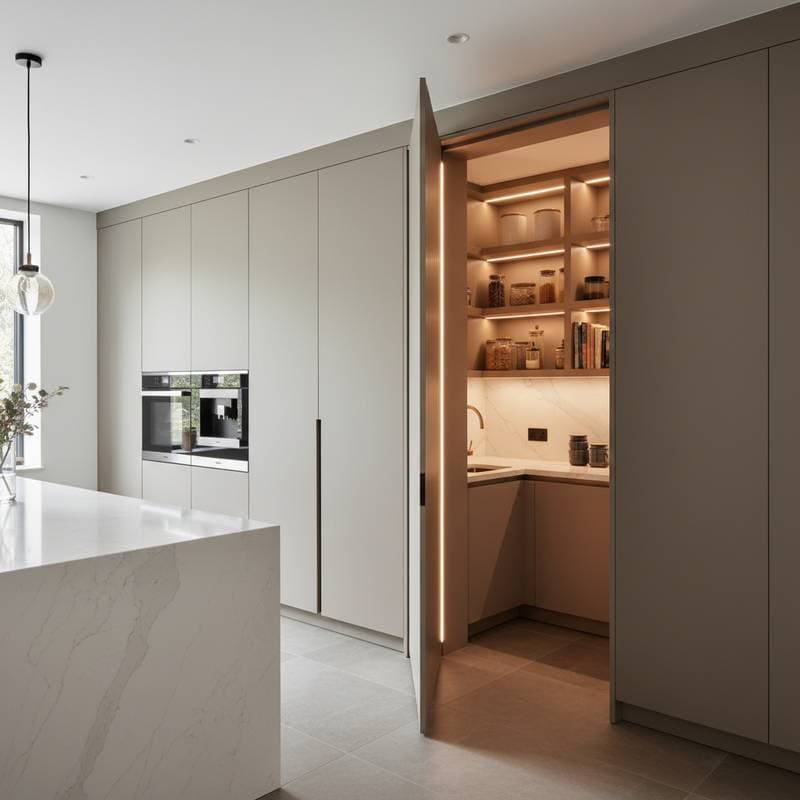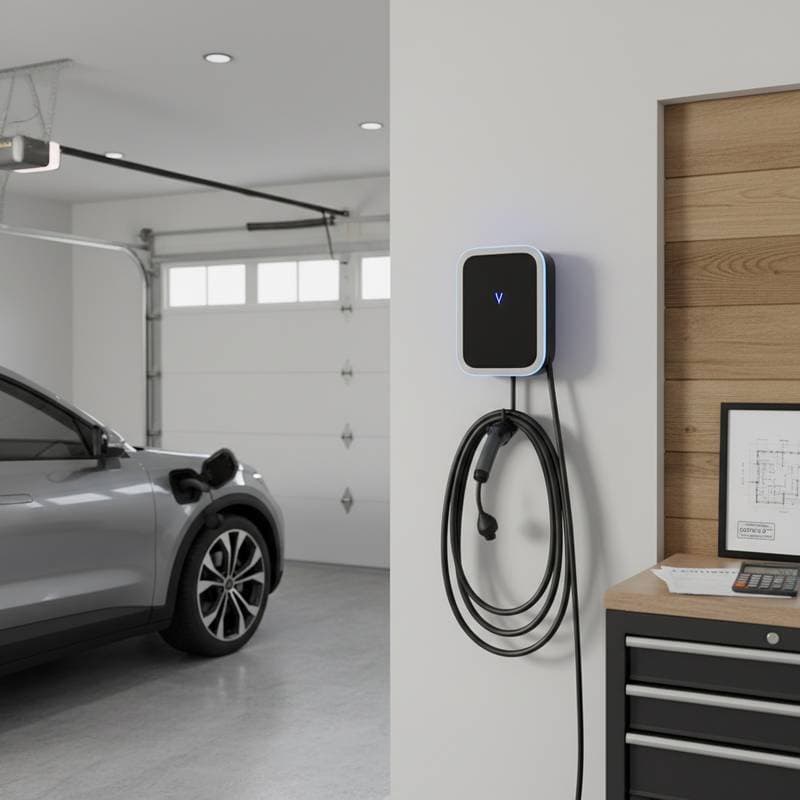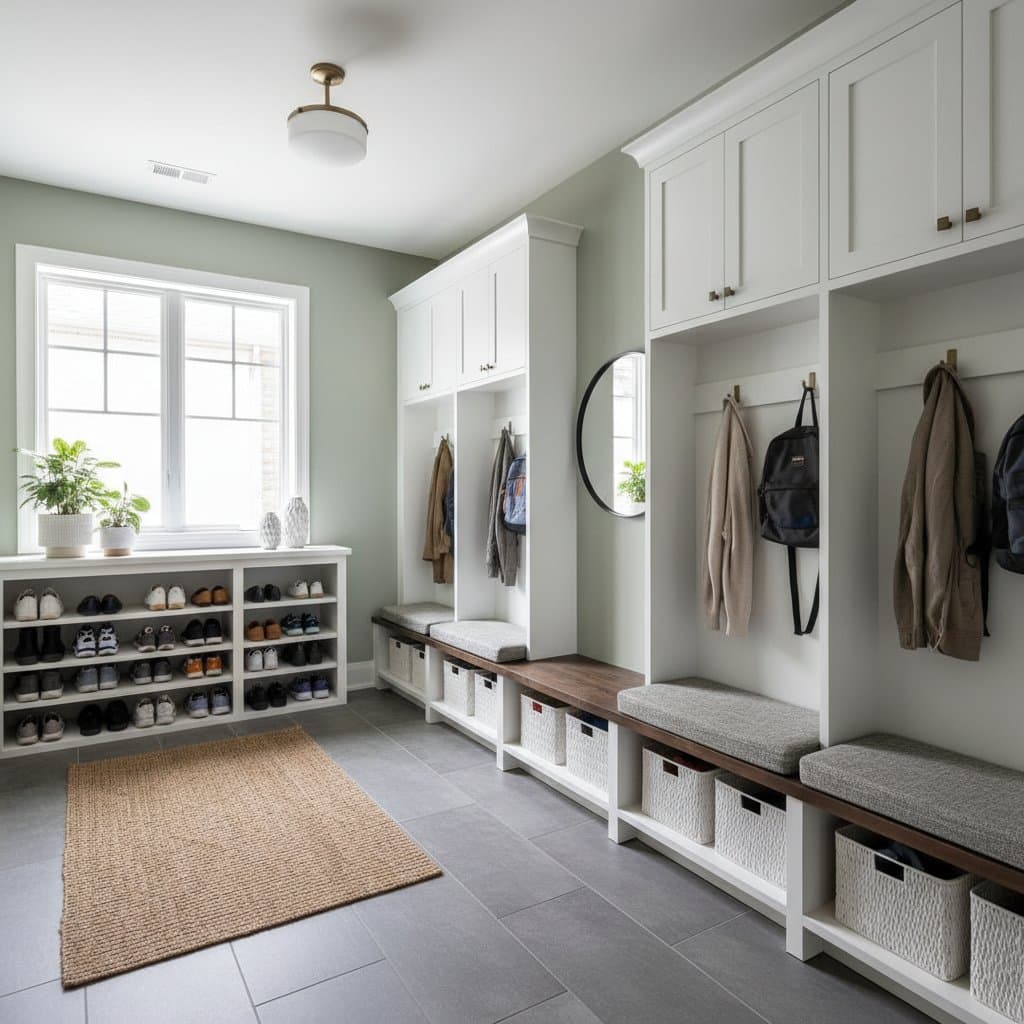Hidden Storage Walls Increase Home Value by 11% in 2025
Hidden storage walls feature integrated panels or cabinetry that blend seamlessly with existing walls to hide shelves, drawers, and compartments. Homeowners with limited square footage or a preference for minimalist aesthetics value these solutions highly. They increase storage capacity without bulky furniture or visual disruptions in living areas.
In a modern kitchen or bedroom, recessed compartments can store appliances or linens discreetly. This method organizes items effectively and creates an illusion of greater space, which appeals to those focused on design. As real estate markets shift, these features gain prominence in competitive sales environments.
Pros and Cons
Pros
- Boosts resale value by about 10 to 12 percent, based on current market studies.
- Offers generous storage while preserving room aesthetics and avoiding visible extensions.
- Improves traffic flow by removing freestanding pieces that block pathways.
- Supports complete customization to fit wall sizes, materials, and interior styles.
- Reduces need for extra furniture, which opens floor space for alternative purposes.
Cons
- Requires greater upfront costs than ready-made cabinet choices.
- Needs precise construction, typically from skilled carpenters for seamless results.
- Difficult to modify post-installation because of fixed frames and surfaces.
- Hinders access for repairs if utilities such as wiring or pipes sit behind panels.
- Might require building permits for changes to structural walls.
DIY vs Professional Installation
Building hidden storage walls demands detailed work, including exact measurements, framing, and possible electrical integration. A skilled DIY enthusiast could handle basic designs with prefabricated panels, provided planning remains thorough. Plan for two to five days on a standard project, and collect tools like a stud finder, circular saw, spirit level, and power drill.
Choose professional help for situations that include:
- Creating a fully flush, built-in finish comparable to custom cabinetry.
- Adding features such as recessed lighting, outlets, or ventilation within the wall.
- Modifying load-bearing structures that influence home stability.
- Using high-end finishes like handcrafted millwork or specialized paints.
Professionals guarantee adherence to safety codes and procure superior materials, which saves time and minimizes mistakes.
Step-by-Step Installation Guide
These steps outline construction of a basic hidden storage wall on a non-structural interior wall.
- Measure the wall accurately and use a detector to find studs, steering clear of utilities.
- Draw the layout, detailing compartment depths, shelf positions, and access methods like sliding doors or lift panels.
- Frame any recesses by cutting into the wall and strengthening with wooden studs for support.
- Attach support brackets and hardware to spread weight evenly over the framework.
- Fit panels or doors so they sit perfectly level with the adjacent wall.
- Add trim or molding at edges to hide joints and achieve a smooth appearance.
- Apply paint, stain, or sealant to surfaces for matching and protection from damage.
- Test doors or panels, adjusting hinges for effortless movement.
- Examine the setup closely, securing all fasteners and removing debris.
Incorporate soft-close hinges or automated locks for enhanced use. Wear protective equipment throughout and confirm no hidden hazards exist.
Maintenance and Expected Lifespan
Proper care allows hidden storage walls to last 15 to 25 years with dependable performance. Apply silicone-based spray to tracks and hinges every six months to avoid binding. Conduct yearly inspections for misalignment or loose parts, fixing issues quickly to prevent worsening.
Avoid aggressive handling that might distort materials gradually. Renew outer finishes every five to 10 years via repainting or refinishing to sustain attractiveness. Manufacturers often offer warranties of one to five years for material and labor defects; keep records for any claims.
In busy zones, choose sturdy hardwoods or engineered composites to endure routine handling. Vacuum interiors regularly to control dust, which supports air quality and accessibility.
Alternative Storage Solutions
Hidden walls provide superior concealment, yet other choices fit diverse budgets and requirements.
Freestanding Storage Cabinets
These options cost less and move with ease, although they take up noticeable floor space and might not harmonize with surroundings.
Under-Stair Storage Drawers
Suited to smaller homes, they make use of unused corners well but limit application to stair areas.
Murphy-Style Fold-Out Units
Useful in versatile rooms, these collapse compactly but do not match the complete wall blending of hidden designs.
Modular Closet Organizers
Flexible with adjustable shelves, they tend to stay somewhat visible, which diminishes sleekness.
Assess each based on your home layout and key priorities for cost, adaptability, and style balance.
Regional Considerations for Installation
Costs vary by local labor rates; urban areas often add 20 to 30 percent due to high demand. In moist climates, select moisture-resistant medium-density fiberboard or sealed hardwoods to counter swelling from humidity. Coastal homes gain from stainless steel hardware resistant to salt corrosion.
Examine local codes carefully, especially for walls with electrical lines, switches, or ducts. Some areas require inspections for changes affecting structure or electricity, promoting safe and compliant work.
Return on Investment and Resale Impact
Hidden storage walls deliver clear financial benefits, as real estate professionals report average 11 percent increases in sale prices for enhanced homes. Buyers value the extra utility and refined look, seeing them as upscale additions. To optimize returns, match designs to the property's architecture and use lasting, classic materials.
Target high-value spots like bedrooms for clothing storage, kitchens for tool hiding, and hallways for outerwear. Appraisal data highlights how these upgrades set properties apart in crowded markets, speeding sales and supporting higher prices.
Essential Safety Measures
Before starting, scan walls with a multi-function detector to spot wiring, pipes, and supports. Seek advice from a structural engineer for load-bearing wall changes to avoid weakening. Hire licensed electricians for lighting or outlet additions to satisfy regulations.
Provide sufficient ventilation near enclosed devices or heat sources to prevent overheating. Follow permitting rules in your area and record all actions for later use. Such steps protect the installation's durability and family safety.
Frequently Asked Questions
How Much Wall Depth Is Required for Hidden Storage?
Basic shelving needs at least six inches; setups for larger items may require recessing or framing to gain depth.
Is Internal Lighting Feasible in Hidden Compartments?
Yes, LED strips offer effective, cool lighting. Use low-voltage setups with enough wiring room to meet electrical codes.
Do Hidden Walls Suit Small Rooms Effectively?
They excel in confined areas, adding storage without reducing floor space and thereby improving the sense of openness.
Plan Your Hidden Storage Upgrade
Hidden storage walls merge style and utility, clearing clutter while raising home appeal and value. Contact a certified carpenter or design expert for tailored advice. Ask for comprehensive plans, material details, and cost breakdowns to guide choices.
Gather quotes from three or more trusted firms, considering their expertise, schedules, and guarantees. This methodical process yields a superior result that fits your goals and finances, enhancing your living space long-term.












